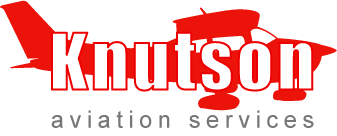
Dedicated to Aircraft Accident Investigation and Improving Air Safety

316-734-5016
This webpage is under construction. Education is one of our cornerstones; therefore, this page will be intended to provide some helpful insight into what we're all about. As a matter of fact, we've published a book through SAE International titled, "Basic Science and Art of Aircraft Wreckage Reconstruction" (2nd Edition) - here's the chapter/section listing ...
Chapter 1 - Perspectives on Investigations and Investigators
-
Basic Anatomy of an Accident and Its Reconstruction
-
Investigation Methodologies for Accidents/ Failures
-
Digging Deeper into System Safety
-
Why Are Aircraft Accidents Investigated?
-
The Human Factor Aspect
-
Requirements to Become an Investigator
-
Generalists and Specialists
-
“Heavy Iron” versus Most General Aviation (GA) Investigators
-
When Consultants/Experts Become Involved
-
Burden of Proof during a Lawsuit
-
Space Is the Next Frontier
Chapter 2 - Back to Basics
-
Physical Evidence Is King
-
Close Calls
-
One Piece at a Time
-
The Scientific Method
-
Nine-Box Matrix
-
Consider Even the Absurd
-
Consequences of Incomplete and Inaccurate Findings
-
Summary of Lessons Learned
Chapter 3 - On-Scene Investigation
-
Before the Investigation Team Arrived
-
Basic Investigation Gear
-
Safety Considerations
-
Emotional Considerations
-
Accident Scene Documentation
-
Wreckage Layout and Recovery
-
Exemplar Aircraft Inspections
-
Tips on Photo Documentation
-
Occupant Injuries
-
Witness Interviews and Statements
-
Understanding the News Media
Chapter 4 - “Kickin Tin”
-
Wreckage Distribution
-
Airframe Structural Damage
-
Cable-Driven Flight Control Trim Tab Systems
-
Electric Motor-Driven Actuators
-
Propeller Blade Impact Damage
-
Turbine Engine Damage
-
Cockpit Instrumentation
-
Who Was Flying the Aircraft?
-
Leaking Air or Fluid Lines
-
Basic Failure Analysis of Metal
-
Basic Composite Failure Analysis
Chapter 5 - Crashworthiness Analysis
-
Implementing Crashworthiness Investigations
-
Aircraft Design Expectations
-
Crash Load Evaluation
-
Using G-Load Survivability Limits to Look Deeper
-
Emergency Egress Issues
Chapter 6 - In-Flight Breakups
-
Behavior of Separated and Falling Parts
-
Piecing the Wreckage Together
-
Flutter
-
Aircraft Performance
-
Human Factors Causing Loss of Control
Chapter 7 - Mid-Air Collisions
-
Pilot Awareness
-
See-and-Avoid Issues
-
Structural Impact and Scratch Marks
Chapter 8 - Fire and Explosions
-
General Aspects of Aircraft Fires
-
General Fire Investigation Objectives
-
Post-Impact and Ground Fires
-
In-Flight Fires
-
Determining Origin of Fires
-
Types of Aircraft Explosions
-
Damage Caused by Detonation
-
Damage Caused by Deflagration